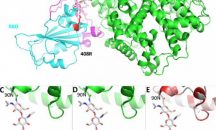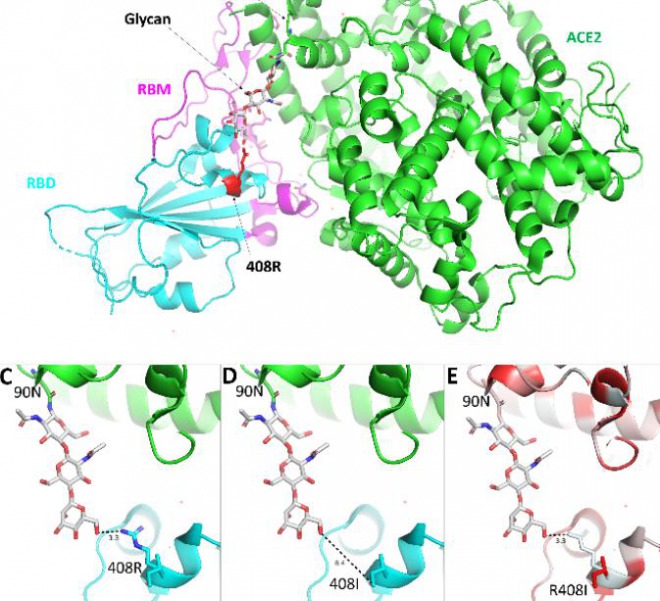これは台湾の国立彰化師範大学とオーストラリアのマードック大学の共同研究チームが発表した情報で、ウイルスの表面にある突起状の「スパイクタンパク質」受容体結合ドメイン(RBD)で異変が確認されたとまとめています。
今まで新型コロナウイルスの突然変異率は低いとされ、それを前提としてワクチン開発が行われていました。
ウイルスの変異をRBDで確認したのは初で、今回の変異報告が事実ならば、あらゆるワクチン開発に深刻な影響が出ることになりそうです。
また、上海の復旦大学とニューヨーク血液センターの研究者らが発表した調査報告書にも驚きの情報があり、「新型コロナウイルスは免疫細胞に感染して無力化することが出来る」と書いてありました。
新型コロナウイルスはスパイク部分で免疫細胞に取り付き、免疫細胞であるT細胞の動きを止めてしまうことが可能。
今までのウイルスとは異なる動きで、実際に感染者の免疫力が弱っていることも確認されています。
他にもまだ新型コロナウイルスの分かっていない能力があると見られ、改めて新型コロナウイルスの危険性を再認識する必要がありそうです。
Monitoring the mutation dynamics of SARS-CoV-2 is critical for the development of effective approaches to contain the pathogen. By analyzing 106 SARS-CoV-2 and 39 SARS genome sequences, we provided direct genetic evidence that SARS-CoV-2 has a much lower mutation rate than SARS. Minimum Evolution phylogeny analysis revealed the putative original status of SARS-CoV-2 and the early-stage spread history. The discrepant phylogenies for the spike protein and its receptor binding domain proved a previously reported structural rearrangement prior to the emergence of SARS-CoV-2. Despite that we found the spike glycoprotein of SARS-CoV-2 is particularly more conserved, we identified a mutation that leads to weaker receptor binding capability, which concerns a SARS-CoV-2 sample collected on 27th January 2020 from India. This represents the first report of a significant SARS-CoV-2 mutant, and raises the alarm that the ongoing vaccine development may become futile in future epidemic if more mutations were identified.
「コロナに重大な突然変異発見…ワクチン開発が無駄になる可能性」
https://headlines.yahoo.co.jp/hl?a=20200415-00000008-cnippou-kr
香港紙サウスチャイナ・モーニング・ポスト(SCMP)は、台湾の国立彰化師範大学とオーストラリアのマードック大学の共同研究チームが最近インドから検出した新型コロナウイルスが変異を起こした事実を確認した。研究チームによると、突然変異はウイルス表面に突起状の「スパイクタンパク質」受容体結合ドメイン(RBD)で確認された。RBDからウイルス変異が確認されたのは初めてというのが研究チーム説明だ。
COVID-19, the novel coronavirus disease caused by SARS-CoV-2 and outbroken at the end of 2019 in Wuhan, China,1 becomes a worldwide pandemic. SARS-CoV-2 belongs to the betacoronavirus genus and has 79.5% identity to SARS-CoV. SARS-CoV-2 uses angiotensin-converting enzyme 2 (ACE2) as its host entry receptor.2 The clinical manifestations of COVID-19 include pneumonia, diarrhea, dyspnea, and multiple organ failure. Interestingly, lymphocytopenia, as a diagnostic indicator, is common in COVID-19 patients. Xiong et al. found upregulation of apoptosis, autophagy, and p53 pathways in PBMC of COVID-19 patients.3 Some studies reported that lymphocytopenia might be related to mortality, especially in patients with low levels of CD3+, CD4+, and CD8+ T lymphocytes.4,5 Lymphocytopenia was also found in the Middle East respiratory syndrome (MERS) cases. MERS-CoV can directly infect human primary T lymphocytes and induce T-cell apoptosis through extrinsic and intrinsic apoptosis pathways, but it cannot replicate in T lymphocytes.6 However, it is unclear whether SARS-CoV-2 can also infect T cells, resulting in lymphocytopenia.
関連過去記事
新型コロナウイルスが変異か 中国の調査班代表「インフルの20倍に強まっている」「遺伝子が変異した」
https://johosokuhou.com/2020/04/12/29250/

いいね!しよう










